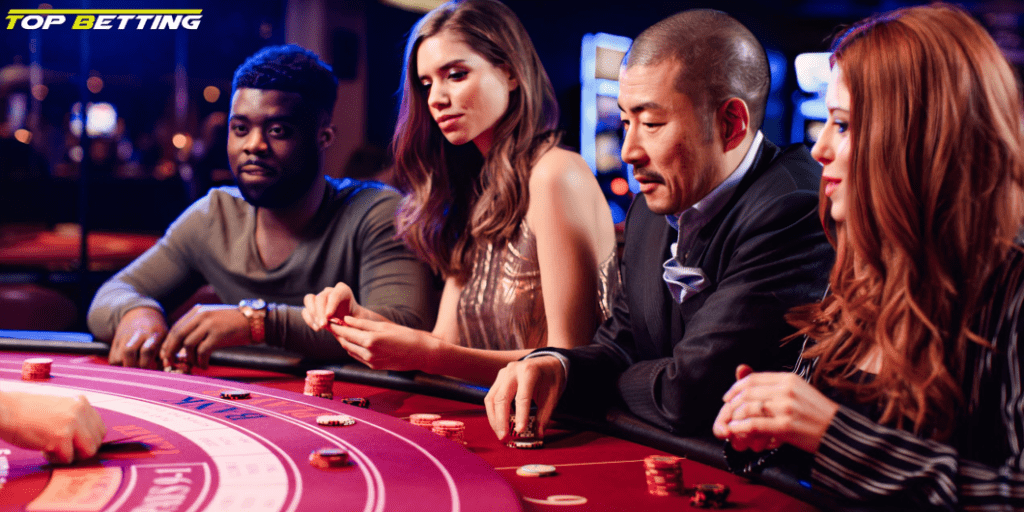
The Psychology Behind Gambling
The allure of gambling: Understanding the need for excitement and risk
Step into any casino and you’ll be greeted by a world of flashing lights, ringing slot machines, and the captivating allure of a potential win. But what is it that draws people to the world of casino gambling? Is it simply the desire to strike it rich, or is there something deeper at play?
At the heart of gambling’s appeal lies a fundamental human need for excitement and risk-taking. Our brains are wired to seek out novel and stimulating experiences, and gambling provides a thrilling avenue for satisfying this innate desire. The unpredictable nature of gambling, with its tantalizing possibility of a big payoff, triggers a surge of adrenaline and dopamine – the neurotransmitters associated with pleasure and reward.
This neurochemical rush creates a sense of heightened arousal and anticipation, which can be highly addictive. The thrill of the unknown, the suspense of waiting for the outcome, and the potential for a life-changing payout all contribute to the allure of gambling. It’s a powerful combination that taps into our basic human instincts, making it difficult for some individuals to resist the temptation to keep playing, even in the face of losses.
The role of cognitive biases in gambling behavior
Gambling behavior is also heavily influenced by various cognitive biases that shape our decision-making processes. One of the most well-known biases in the gambling context is the gambler’s fallacy, which leads individuals to believe that a past loss or a series of losses increases the likelihood of a future win. This flawed reasoning stems from the mistaken belief that independent events are somehow connected, leading gamblers to chase their losses in the hope of recouping their previous defeats.
Another cognitive bias that contributes to gambling behavior is the illusion of control, where individuals believe they can influence the outcome of a game of chance through their own skill or strategy. This belief can lead gamblers to overestimate their ability to predict or control the unpredictable nature of games like roulette, blackjack, or slot machines, leading them to take on more risk in the pursuit of a perceived advantage.
Furthermore, the sunk cost fallacy can also play a role in gambling behavior, where individuals continue to invest time and money into a losing proposition because they have already invested resources into it. This cognitive bias can make it difficult for gamblers to walk away from a game, even when the odds are clearly stacked against them, as they feel compelled to recoup their previous losses.
The impact of reinforcement and reward systems in gambling
Gambling’s allure is further amplified by the powerful impact of reinforcement and reward systems in the brain. When we engage in gambling activities, our brains release dopamine, a neurotransmitter that is closely associated with pleasure and reward. This chemical release creates a sense of euphoria and excitement, which can be highly addictive.
The intermittent nature of gambling reinforcement, where wins and losses are unpredictable, can lead to a phenomenon known as “partial reinforcement.” This means that the brain is constantly on the lookout for the next potential reward, even if it comes with a high degree of uncertainty. This unpredictability triggers a heightened state of arousal and anticipation, further fueling the desire to keep playing.
Moreover, the “near miss” effect, where a gambler almost wins but ultimately fails, can also contribute to the addictive nature of gambling. These near-miss experiences activate the brain’s reward system, leading the individual to believe that they are closer to a big win, and thus, encouraging them to continue playing in the hope of eventually hitting the jackpot.
The influence of social factors in gambling
Gambling behavior is not solely driven by individual psychology; it is also heavily influenced by social factors. The social environment in which gambling takes place can play a significant role in shaping an individual’s attitudes and behaviors towards gambling.
For instance, the presence of peers or family members who engage in gambling can normalize the activity and make it more socially acceptable. This peer influence can lead individuals to view gambling as a fun and acceptable way to spend time, even if they may not have initially been inclined to participate.
Furthermore, the social status and perceived prestige associated with gambling can also contribute to its appeal. In some social circles, being a skilled or successful gambler can be seen as a mark of status and intelligence, which can motivate individuals to engage in gambling activities to gain social recognition and approval.
The psychology of addiction: Understanding problem gambling
While the allure of gambling can be strong for many individuals, for some, it can spiral into a serious problem that can have devastating consequences. Problem gambling is a complex psychological condition that involves a persistent and uncontrollable urge to gamble, despite the negative consequences it may have on an individual’s personal, social, and financial well-being.
At the heart of problem gambling lies a neurological imbalance in the brain’s reward system. Individuals with problem gambling tendencies often have a heightened sensitivity to the dopamine rush associated with gambling, leading them to seek out these experiences more frequently and with greater intensity. This can lead to a vicious cycle of chasing losses and engaging in increasingly risky gambling behaviors to maintain the desired level of excitement and reward.
Moreover, problem gambling can also be exacerbated by underlying mental health issues, such as depression, anxiety, or substance abuse. These co-occurring conditions can further amplify the individual’s need to escape from reality and find solace in the temporary relief provided by gambling activities.
The role of advertising and marketing in promoting gambling behavior

The gambling industry’s relentless marketing and advertising efforts play a significant role in shaping societal attitudes towards gambling and promoting problematic behaviors. Casinos, online betting platforms, and other gambling operators invest heavily in creating captivating and alluring campaigns that glamorize the gambling experience and downplay the risks involved.
These marketing strategies often appeal to our innate desire for excitement, wealth, and social status, portraying gambling as a thrilling and rewarding activity that can transform one’s life. The use of celebrity endorsements, free bonuses, and targeted promotions can further reinforce the perception that gambling is a normal and acceptable form of entertainment, making it harder for individuals to resist the temptation.
Moreover, the ubiquity of gambling advertising, particularly on digital platforms and social media, can desensitize individuals to the risks associated with gambling and normalize the behavior, especially among younger generations who may be more susceptible to these influences.
Psychological strategies used by casinos to keep players engaged
Casinos are well-versed in the art of manipulating the psychological factors that drive gambling behavior, employing a range of strategies to keep players engaged and playing for longer periods of time. From the design of the physical environment to the implementation of specific game mechanics, casinos leverage psychological principles to create an immersive and captivating experience that is difficult to resist.
One such strategy is the use of sensory stimuli, such as flashing lights, loud sounds, and the constant movement of people and machines, which can create a sense of excitement and heighten the player’s arousal levels. This sensory overload can make it challenging for individuals to maintain a clear sense of time and reality, leading them to lose track of their spending and continue playing for longer than they had intended.
Casinos also employ the principle of “variable ratio reinforcement,” where wins and losses are unpredictable, creating a sense of anticipation and excitement that can be highly addictive. This, combined with the strategic placement of ATMs, free drinks, and other amenities, can make it difficult for players to step away and take a break, further reinforcing the casino’s hold on their attention and spending.
Responsible gambling: Promoting a healthy mindset and behavior
As the allure of gambling continues to captivate individuals worldwide, it is crucial to address the psychological factors that contribute to problematic gambling behavior and promote responsible gambling practices. This involves a multifaceted approach that combines education, regulation, and the implementation of safeguards to protect individuals from the potential harms of gambling addiction.
One key aspect of responsible gambling is the promotion of a healthy mindset and the development of strategies to manage gambling behavior. This includes educating individuals about the cognitive biases and psychological mechanisms that can influence their decision-making, as well as providing them with practical tools and techniques to maintain a balanced and rational approach to gambling.
Conclusion: Understanding the complex interplay of psychology and gambling
Gambling’s allure is a complex and multifaceted phenomenon, rooted in our innate human desires for excitement, risk-taking, and the pursuit of reward. From the neurochemical rush of dopamine to the powerful influence of cognitive biases and social factors, the psychology behind gambling behavior is a tapestry of intertwining elements that shape our attitudes and actions.

As we delve deeper into the psychology of gambling, it becomes clear that the industry’s ability to captivate and retain players is not simply a matter of chance. Casinos and gambling operators have honed their understanding of human psychology, employing a range of strategies to create an immersive and addictive experience that can be difficult to resist.











